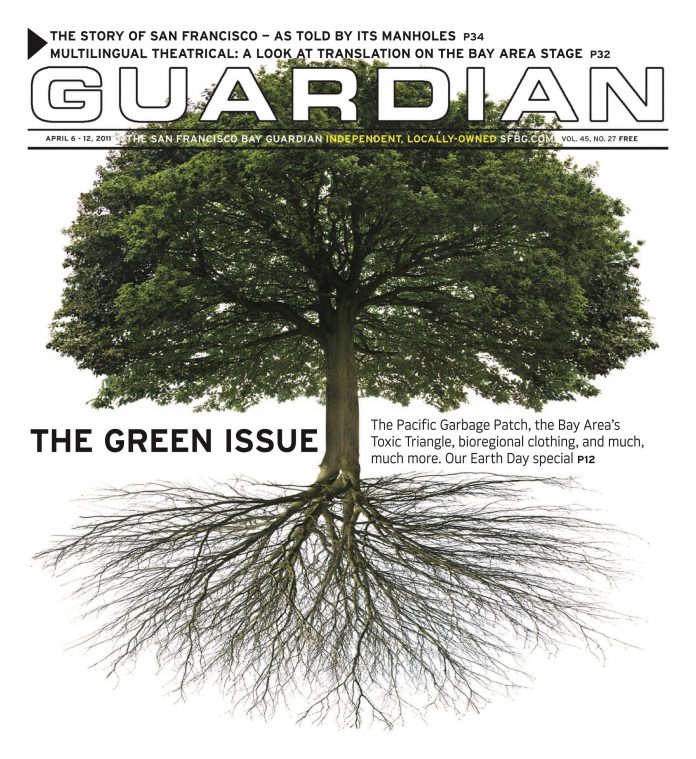culture@sfbg.com
BODY ART Two weeks ago more than 300 tattoo, piercing, and body modification artists hung out their shingles at the Cow Palace for the San Francisco Body Art Expo. They came from Beijing, Samoa, Los Angeles, the Haight. Their booths ranged up and down the hall in no particular order. Hip-hop playing over the speakers in the booths did little to cut the pervasive metallic whine of tattoo machines.
It was difficult, at first, to tell one artist from another — the same Boris Carloffs and beautiful corpses were everywhere. I overheard Daat Kraus of Santa Rosa Tattoo recommend Freddy Negrete to two young men who’d been flipping through his portfolio. “He’s the real deal, the O.G. Definitely get tattooed by him if you can.” I asked him what sets Freddy apart, but his answer was slippery: “He’s like, 60 years old. He’s an old-school cholo artist.”
I wasn’t totally sure what that meant, but I began to perceive two major styles coexisting at the expo — you could call it East Coast versus West, old school versus new, or color versus black-and-gray. East Coast style is partly inspired by old sailor tattoos and vintage poster art — winking pin-up girls and devils, mermaids and anchors. West Coast style is influenced by Asian and Latino art and characterized by script and portraits in black and gray.
George Christian of L.A.’s South Style Tattoo, began his career in prison on a tattoo machine made out of a Walkman. He says his style is a Chicano art form, invented in East L.A. “It’s barrio art, self-expression,” he said. He showed me some of his own tats: a portrait of his mom, a sun goddess, a gargoyle — a talisman of protection — and, on his right arm in flowing script, “White Fence” — the oldest Chicano gang in East L.A. I asked how he feels giving someone a tattoo he knows is gang-related. “That’s on them,” he laughed. “I don’t ask why.”
As tattoos become more mainstream, tattoo collectors become more diverse — and so does the form. Barnaby, of Mom’s Tattoo in the Haight, has a B.F.A. from Otis College of Art and Design. He gave himself his first tattoo, a Dead Kennedys symbol, when he was 15. Barnaby seemed a little disillusioned with the expo — he was concerned, for example, about hygiene. He pointed to the rafters above our heads, where a layer of dust was plainly visible. “Would you go to a gynecologist in a garage?” he asked.
He showed me his setup — everything, including his lamp, was wrapped in plastic, like in a dentist’s office. He explained that all his precautions are more for his own safety than for his customers’. He keeps himself safe by assuming the worst. “Even if you’re the cutest little blonde virginal 18-year-old, I assume you have everything, you’re the dirtiest gutter punk I’ve ever seen, with an abscess on your arm. Can you draw?” he asked. I shook my head no. “You can probably get a booth here.”
Toward the end of my second day at the expo, by accident, I found Freddy Negrete. He was bent over someone’s forearm, outlining a detailed black-and-gray portrait of Danny Trejo — the famous image where Trejo is lighting up a blunt, smoke wreathing his face, his bare, tattooed chest on display.
His client Brian Boulware explained why he’d chosen Danny Trejo. “He’s this great character actor — he’s been in everything” he said. “People will see it and be like, hey, it’s that guy from those movies!”
I asked Freddy if he’d ever done any work on Trejo. “Once,” he said, “a long time ago.”

